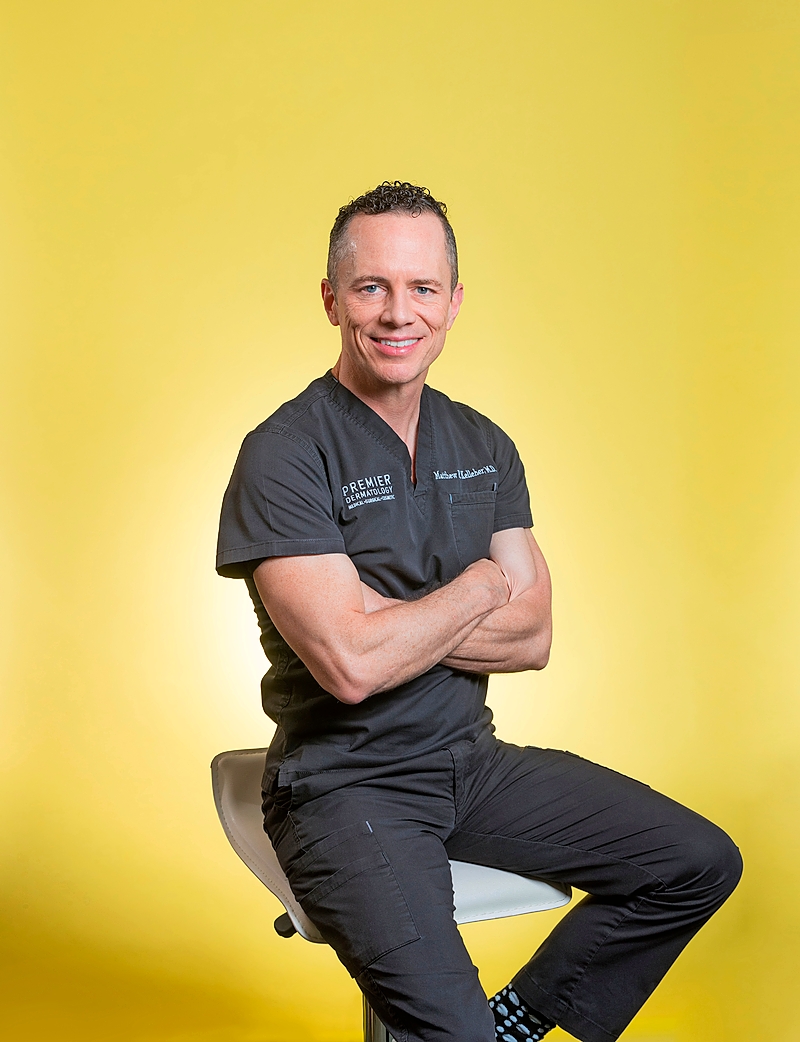Skin Science
By Kathy Aabram
Appears in the July 2018 issue.

Premier Dermatology’s medical director, Dr. Matthew Kelleher, says he has the greatest job in medicine: “The aesthetic part of dermatology—helping people feel better about how they look—is enjoyable and deeply satisfying.” But his specialty, laser treatments, can be used to treat a wide variety of medical conditions, as well as improve appearance.
“Laser” is actually an acronym for Light Amplification by Stimulated Emission of Radiation (thank Einstein and his 1917 quantum theory). Medical lasers produce focused beams of intense single-colored light, which selectively treat or remove skin tissue. “It’s a complicated field—the combination of medicine, physics and art,” Dr. Kelleher says. “Often I use a variety of lasers in a single session to get the results the patient wants.” Lasers can help with fine lines, wrinkles, freckles, age spots and more:
Acne Lasers can dramatically diminish skin redness and reduce scars.
Basal cell cancer Certain skin cancers respond well to laser therapy, with minimal side effects.
Disfiguring birthmarks Lasers can remove or reduce birthmarks, especially with early treatment.
Melasma Sometimes called the pregnancy mask, this blotchy brown pigment is permanent, but lasers can mitigate it.
Pseudofolliculitis Laser therapy can reduce razor bumps, irritation and other problems in this common male condition, which is often caused by ingrown hair after shaving.
Rosacea Lasers can substantially reduce visible blood vessels and redness.
Scars Thick, red scars can be smoothed and lightened.
Tattoo removal Lasers can eliminate tattoos safely, including ink colors once impossible to remove. Because of the complexity of tattoo removal, the FDA recommends consulting a dermatologist rather than relying on an aesthetician.
Warts If other removal methods fail, laser treatment can usually eliminate warts.


